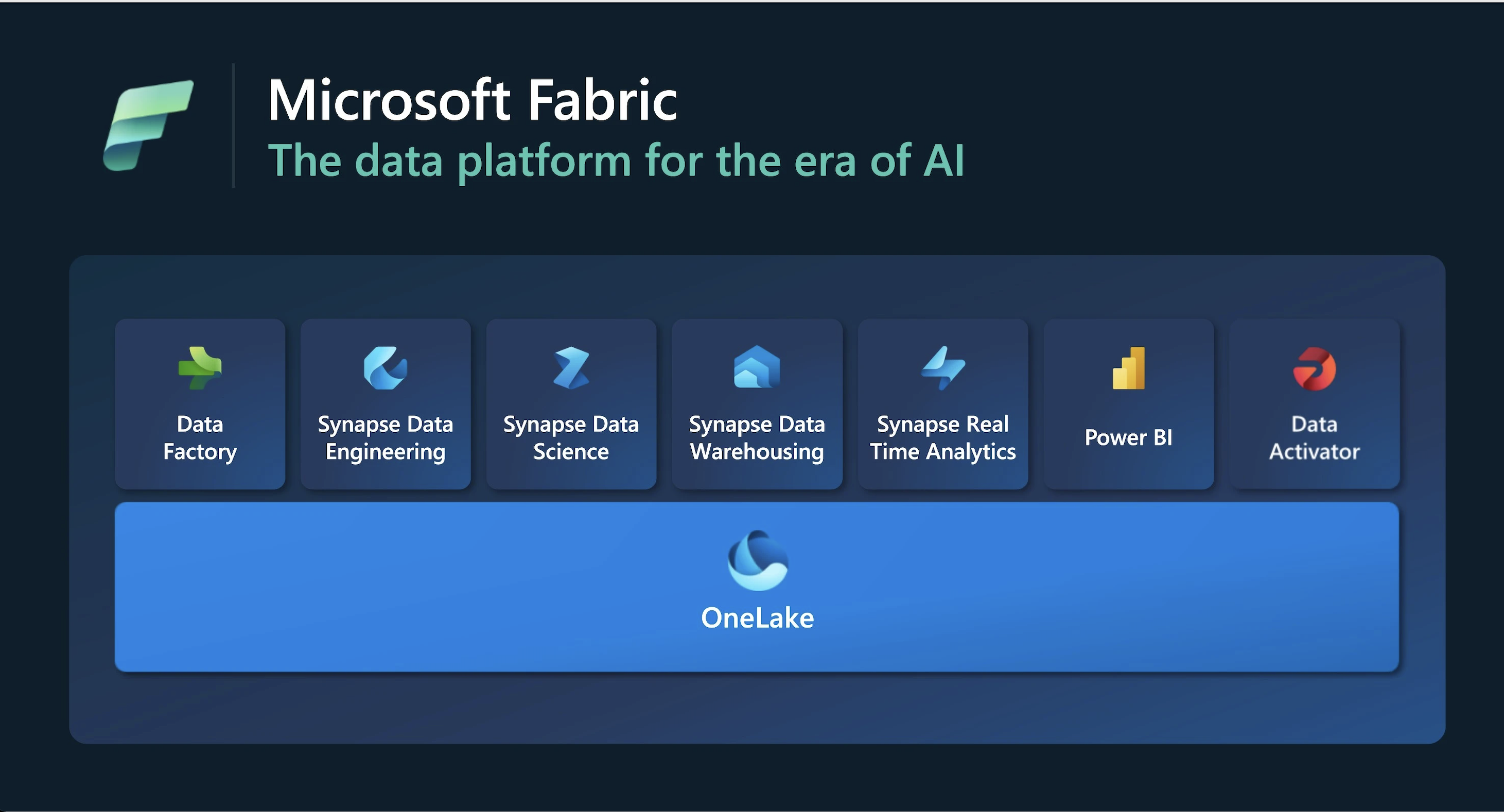Microsoft Fabric, the Data and Analytics Platform, not to be confused with Azure Service Fabric, revolutionizes how organizations handle data and extract valuable insights. It streamlines the end-to-end data lifecycle, providing robust tools and capabilities for seamless data collection, processing, analysis, and visualization.
In this blog post, we will explore the key components of Microsoft Fabric and its ability to empower businesses in deriving actionable intelligence from their data assets.

Image Credits: Microsoft
Understanding Microsoft Fabric
Microsoft Fabric is a comprehensive and scalable data and analytics platform that streamlines the end-to-end data lifecycle. It offers organizations robust tools and capabilities to seamlessly collect, process, analyze, and visualize data, enabling data-driven decision-making and transformative business outcomes.
Key Features of Microsoft Fabric
Data Integration: Microsoft Fabric seamlessly connects to diverse data sources, consolidating data into a unified platform for comprehensive analysis.
Data Processing: Organizations can process large volumes of data in real-time or batch mode, leveraging distributed processing frameworks like Apache Spark and Hadoop.
Advanced Analytics: Microsoft Fabric enables advanced analytics techniques such as machine learning and predictive analytics, uncovering trends and patterns to drive informed decision-making and operational efficiency.
Data Visualization: The platform offers intuitive data visualization capabilities, empowering stakeholders to gain a holistic view of data through interactive dashboards and reports.
Benefits of Using Microsoft Fabric
Scalability and Performance: Microsoft Fabric handles large and growing datasets efficiently, ensuring high-performance data processing even as volumes increase.
Data-Driven Decision-Making: Advanced analytics capabilities enable organizations to extract meaningful insights, optimize operations, identify new opportunities, and gain a competitive edge.
Agility and Flexibility: Microsoft Fabric seamlessly integrates with other Microsoft tools and services, allowing organizations to adapt their data and analytics infrastructure to evolving business needs.
Security and Compliance: The platform prioritizes data security, incorporating encryption, access control, and data governance features to safeguard sensitive information and ensure regulatory compliance.
Getting Started with Microsoft Fabric
Getting Started: Organizations can explore the official Microsoft documentation, which provides comprehensive resources, tutorials, and examples for installation, configuration, and best practices in data integration, processing, advanced analytics, and data visualization using Microsoft Fabric.
It is worth highlighting that within Microsoft Fabric, there exists a Copilot feature aimed at enhancing user convenience when it comes to tasks such as building data pipelines, generating code, and constructing machine learning (ML) models. Just like the current public preview version of Microsoft Fabric, Microsoft Copilot has not yet been fully launched onto the market.
In conclusion, Microsoft Fabric empowers organizations to unlock the full potential of their data assets. With its seamless integration of data and analytics capabilities, organizations can derive actionable intelligence, optimize operations, and make data-driven decisions. Microsoft Fabric sets the stage for a transformative data-driven future, enabling organizations to unlock new insights and drive innovation in their industries.






